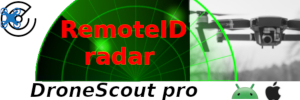I see so many threads here about people having to land in the middle of a dense forest, or in the middle of a lake because they misjudged their remaining battery level. Even though the level is prominently displayed on both the Mavic Pro and M2 controllers, in addition to being on your device's display, I would not rely on it to extend your flight time when it gets below 50%. I always plan to land with 30% reserve battery, or 25% if Im close-in.
While the battery meter in the Mavic is pretty accurate in measuring voltage at the moment, that doesnt necessarily mean that the battery will discharge evenly and linearly. Most Lipos pack their punch in the first half of the battery, with the second half tapering off quite rapidly. Any motorcycle owners out there might be familiar with a motorcycles analog fuel gauge. On my old Road King, I could go 150 miles on the first half tank, then only 50 miles till I ran out of gas on the second half. I could almost watch the needle move as it went from half to empty.
My point is that you should plan your flight to land with 25-30% battery left. In battery planning you should take into consideration some of these factors:
Best to all.
Rob
P.S. Dont forget to enter the Fall Foliage Photo Contest.
Fall Foliage Photo Contest. Prizes for top 6 entries.
While the battery meter in the Mavic is pretty accurate in measuring voltage at the moment, that doesnt necessarily mean that the battery will discharge evenly and linearly. Most Lipos pack their punch in the first half of the battery, with the second half tapering off quite rapidly. Any motorcycle owners out there might be familiar with a motorcycles analog fuel gauge. On my old Road King, I could go 150 miles on the first half tank, then only 50 miles till I ran out of gas on the second half. I could almost watch the needle move as it went from half to empty.
My point is that you should plan your flight to land with 25-30% battery left. In battery planning you should take into consideration some of these factors:
- Time of day - Plan to take off and land in the daylight if you are not an expert or commercial operator
- Estimate your time to climb to cruise altitude,
- Estimated your cruise time at altitude,
- Estimated your descent time.
- I also like to take into account a "what if" situation, where in the event of a dog, kid, or other distraction, I can hover until the obstacle has been cleared. 1-2 minutes works.
- Wind direction - Best to take off into a headwind and return with a tailwind.
- Wind velocity - Dont underestimate the power of winds aloft. Wind speed and direction can also change midflight, another factor to consider.
Best to all.
Rob
P.S. Dont forget to enter the Fall Foliage Photo Contest.
Fall Foliage Photo Contest. Prizes for top 6 entries.
Last edited:











